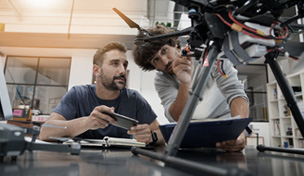Keywords: Biomaterials, Medical Devices, Cardiovascular
Market Overview
Bioprosthetic Heart Valves can replace defective or diseased heart valves, but a majority of these valves fail within a few years due to calcification and degeneration. Currently used methods of fixation, such as glutaraldehyde crosslinking, are not adequate to fix all extracellular matrix components, especially glycosaminoglycans (GAGs) present in the middle spongiosa layer. This technology presents methods for improving the structural and mechanical characteristics of implantable tissue as well as methods for increasing the lifespan of the implantable heart valve tissue.
Applications:
Vascular Implants, Engineered Tissues
Technical Summary:
This technology features a novel improvement of bioprosthetic heart valves (BHVs). This technology is a new method for fixation of BHVs derived from porcine aortic valves. More specifically, these methods can include the bonding of one or more enzyme inhibitors in or on tissue in the course of a stabilization process. Through these methods, implantable tissue can be stabilized and can exhibit increased resistance to degradation, specifically, degradation due to enzyme activity following implantation of the tissues. These methods can lead to increased levels of beneficial extra cellular matrix components remaining in the stabilized implantable tissues as compared to previously known stabilized implantable tissues. Increased levels of such components can further improve the implantable tissues through improved mechanical characteristics and can also lead to a longer lifespan of a bioprosthesis.
Advantages:
- Improves the structural and mechanical characteristics of the implantable tissue
- Increases the lifespan of implantable tissue and its resistance to degradation
- Increases levels of beneficial extra cellular matrix components remaining in the stabilized implantable tissues
Technology Overview
State of Development
Pre-Clinical Validation, In vitro data, In vivo data
Patent Type
Issued Patent
Category
Serial Number
N/A
CURF Reference No.
07-012
Inventors
Dr. Naren Vyavahare
Patent Number
8,142,805
For More Info, Contact:
Interested in this technology?
Contact curf@clemson.edu
Please put technology ID in subject line of email.
Contact
Latest News from CURF
Stay up-to-date with the latest trends in the innovation and research industry. Sign up for our newsletter to see how CURF is making a difference and impacting the economy where we live.









